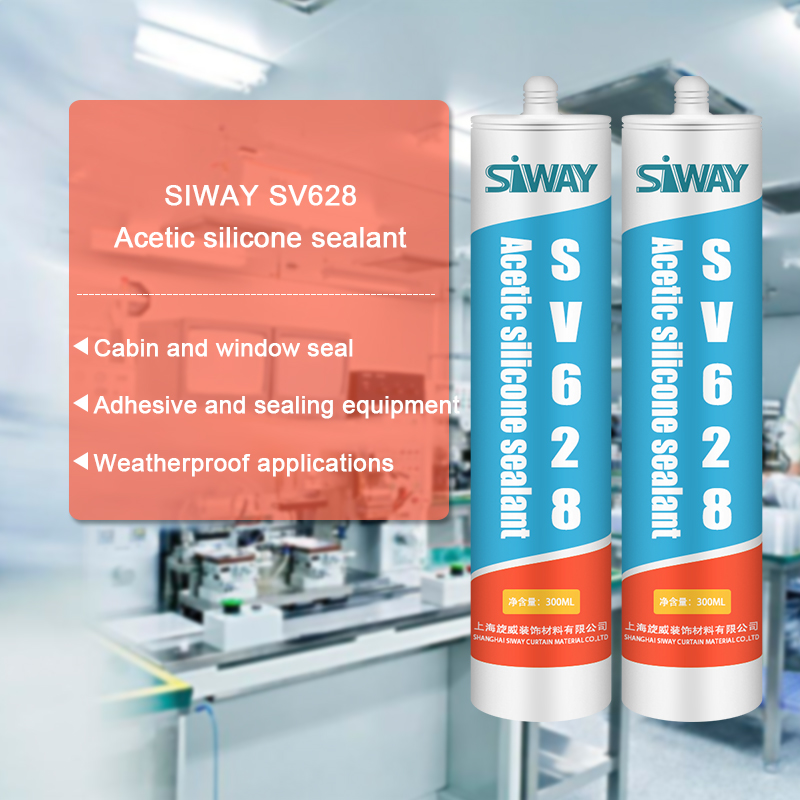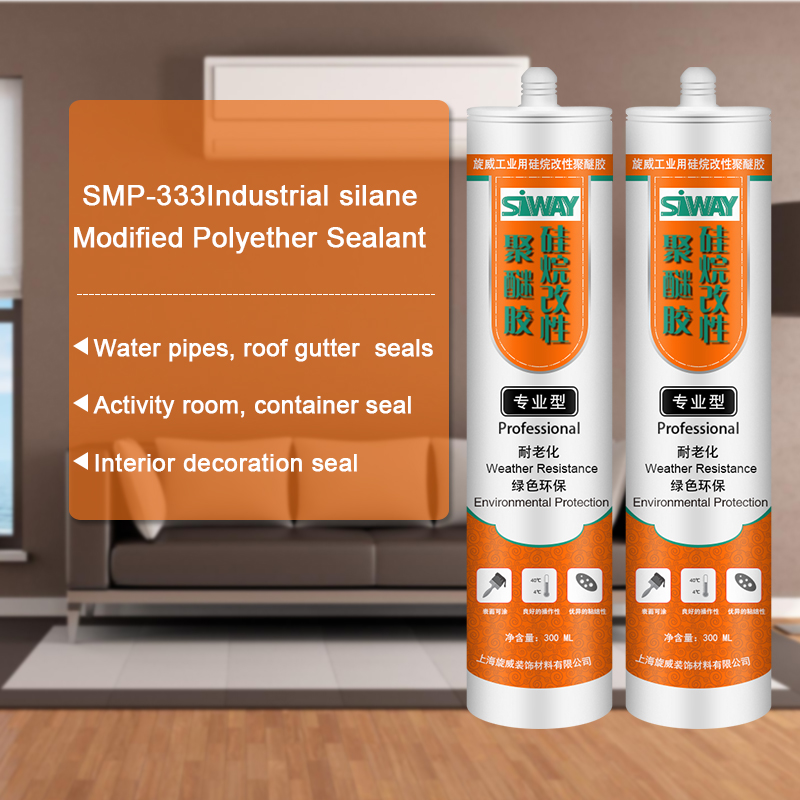Factory best selling SV-628 Acetic Silicone Sealant Supply to Durban
Short Description:
Description It is one- component, moisture curing acetic silicone sealant. It cures fast to form a permanently flexible, waterproof and weather resistant silicone rubber. Where to use Widely used in construction, glass assembling and home decoration.SV-628 has good adhesion to most common building materials e.g. glass, ceramic, tile, wood and fiber glass. Key Features 1. 100% silicone 2. Easy to apply 3. Excellent elasticity 4. Excellent adhesion to most common building materials ...
We emphasize development and introduce new products into the market every year for Factory best selling SV-628 Acetic Silicone Sealant Supply to Durban, If you are interested in our products, please feel free to send us your inquiry. We sincerely hope to establish win-win business relationships with you.
Description
It is one- component, moisture curing acetic silicone sealant. It cures fast to form a permanently flexible, waterproof and weather resistant silicone rubber.
Where to use
Widely used in construction, glass assembling and home decoration.SV-628 has good adhesion to most common building materials e.g. glass, ceramic, tile, wood and fiber glass.
Key Features
1. 100% silicone
2. Easy to apply
3. Excellent elasticity
4. Excellent adhesion to most common building materials
5. Outstanding weatherproofing capability
6. Fast Curing
Basic Application
1.All kinds of glass curtain wall weatherproof seal
2.For metal (aluminum) curtain wall, enamel curtain wall weatherproof seal
3.Joint sealing of concrete and metal
4.Roof joint seal
Technical data sheet
Technical data sheet for reference,
| Test standard | 1000 | |
| Appearance | ISO 11600 | Have no grain, no agglomerations |
| Extrudability,g/ml | ISO 8394 | 450 |
| Tack Free Time,min | ASTM C 679 | 20 |
| Density,g/cm3 | ISO 1183 | 1.0 |
| Slump,mm | ISO 7390 | 0 |
| Heat weight loss,% | ISO 10563 | 7 |
| Ultimate Tensile Strength,MPa | ISO 8339 | 0.4 |
| Ultimate Elongation,% | ISO 8339 | 150 |
| Ultimate Shear Strength, MPa | ISO 4587 | N/A |
Certification
JC/T881-2001 20LM; GB/T14683-2003 20LM.
Color
clear, black, silvery gray, white, brown
Package
300ml in cartridge * 24 per box, 590ml in sausage *20 per box
Shelf life
12 months
Note
If you want the TDS or MSDS or other details, please contact with our sales person.
What is RTV SILICONE? What does RTV SILICONE mean? RTV SILICONE meaning – RTV SILICONE definition – RTV SILICONE explanation.
Source: Wikipedia.org article, adapted under https://creativecommons.org/licenses/by-sa/3.0/ license.
RTV Silicone (Room Temperature Vulcanization silicone) is a type of silicone rubber made from a two-component system (base plus curative; A+B) available in a hardness range of very soft to medium – usually from 15 Shore A to 40 Shore. RTV silicones can be cured with a catalyst consisting of either platinum or a tin compound such as dibutyltin dilaurate. Applications include low-temperature overmolding, making molds for reproducing, and lens applications for some optically clear grades.
To produce the material, the silicone rubber is mixed with the curing agent or vulcanizing agent. Usually the mixing ratio is a few percent. In order for the RTV silicone to reproduce the surface texture, attention is paid to the cleanliness of the original. Vacuum deairing removes entrained air bubbles from the mixed silicone and catalyst to ensure optimal tensile strength, which affects reproduction times. In casting and mold making, RTV silicone rubber reproduces fine details and is suitable for a variety of industrial and art related applications including prototypes, furniture, sculpture and architectural elements. RTV silicone rubber can be used to cast materials including wax, gypsum, low melt alloys/metals and urethane, epoxy or polyester resins (without using a release agent). A more recent innovation is the ability to 3D Print RTV silicones. RTV silicones’ industrial applications include aviation, aerospace, consumer electronics, and microelectronics. Some aviation and aerospace product applications are cockpit instruments, engine electronics potting, and engine gasketing. RTV silicones are used for their ability to withstand mechanical and thermal stress.
RTV silicone rubber has excellent release properties compared to mold rubbers, which is especially an advantage when doing production casting of resins (polyurethane, polyester, and epoxy). No release agent is required, obviating post-production cleanup. Silicones also exhibit good chemical resistance and high temperature resistance (205 °C, 400 °F and higher). For this reason silicone molds are suitable for casting low melt metals and alloys (e.g. zinc, tin, pewter, and Wood’s metal).
RTV silicone rubbers are however generally expensive- especially platinum-cure. They are also sensitive to substances (sulfur-containing modelling clay such as Plastilina, for example) that may prevent the silicone from curing (referred to as cure inhibition). Silicones are usually very thick (high viscosity), and must be vacuum degassed prior to pouring to minimize bubble entrapment. If making a brush-on rubber mold, the curing time factor between coats is long (longer than urethanes or polysulfides, shorter than latex). Silicone components (A+B) must be mixed accurately by weight (scale required) or they do not work. Tin catalyst silicones shrink somewhat, and do not have a long shelf life. Certain types of RTV release acetic acid during the curing process, and this can attack solder joints, causing the solder to detach from the copper wire.




